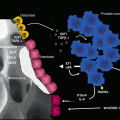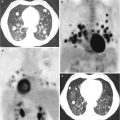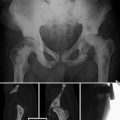Clinical question
No. of tools concerning the clinical question
No. of tool that considered PSA
No. of tools subjected to validation
Prediction of the presence of prostate cancer in the initial biopsy setting
12
12
5
Prediction of the presence of prostate cancer in other than an initial biopsy setting (repeat biopsy)
14
14
6
Prediction of pathologic stage in men who underwent radical prostatectomy for clinically localized prostate cancer
29
29
22
Preoperative prediction of biochemical recurrence in men who underwent radical prostatectomy
9
9
6
Postoperative prediction of biochemical recurrence in men who underwent radical prostatectomy
8
6
5
Pretreatment prediction of biochemical recurrence in men treated with radiotherapy
10
10
5
Prediction of metastasis and survival
17
16
13
Prediction of life expectancy
4
2
2
Prediction of specific pathological features or biochemical recurrence after radical prostatectomy for clinically localized prostate cancer based on novel variables
6
6
6
While approximately half of the tools have been developed to predict either the result of biopsy or pathological stage, 54 tools were focused on the prediction of outcomes after the treatment of primary tumor in newly diagnosed patients. The majority of them (49/54) included PSA and 68.5 % underwent either internal or external validation, while only a limited number of tools (6/109) considered novel variables [15]. Notably, these tools have been tested and validated in thousands of patients.
In summary, PSA has been extensively studied in all the clinical conditions that may occur from the treatment with curative intent of the primary prostate cancer to the development and the treatment of the bone. Many diagnostic tools integrating PSA with other clinical and pathological information have been developed to facilitate unbiased clinical decisions
4.4 The Position of Clinical Practice Guidelines
From the above findings, it could be argued that evidence should be adequate to provide clinicians with established recommendations for the clinical practice.
We therefore examined available guidelines in order to search for established recommendations concerning the use of PSA for either the prediction or management of metastatic prostate cancer. In the context of a broader project aimed at updating the synopsis of existing recommendations on tumor markers in solid tumors [16], we set up a search strategy and explored the following databases: Pubmed-Medline, National Guideline Clearinghouse (NGC) and GIN library; we also interrogated 11 websites of scientific societies producing guidelines and 61 websites of medical scientific societies [16]. The search was conducted in the last 5 years and sorted 96 documents identified as guidelines concerning prostate cancer, which were further examined and selected on the basis of the methodological quality and rate of utilization by clinicians in Italy. The methodological quality was evaluated according to inclusion criteria set by National Guideline Clearinghouse, and documents were selected if the clinical practice guideline was based on a systematic review and a description of the search strategy was reported. Widely used guidelines were considered also when methodology was not fully compliant with above mentioned criteria. A total of 35 guidelines concerning prostate cancer were eventually selected. The recommendations concerning the use of PSA in the different clinical settings were extracted and synoptically presented.
4.5 PSA as Risk Predictor in Newly Diagnosed Patients Before Any Therapeutic Intervention
In this clinical setting, PSA may provide information on both long-term outcomes – such as biochemical recurrence, clinical recurrence, and survival – and the risk that occult bone metastases may be already present at the time of first diagnosis. Table 4.2 summarizes the recommendations of the examined guidelines.
Table 4.2
Summary of recommendation(s) on PSA as risk predictor in the pretreatment staging of prostate cancer
Organization | Summary of recommendation(s) | PSA risk criteria |
|---|---|---|
Cancer Care Ontario (2010) [17] | PSA is used as risk stratification to plan treatment type | Low risk: PSA ≤10 ng/mL and a biopsy Gleason score of 6 or less and clinical stage T1c or T2a Intermediate risk: PSA >10 to 20 ng/mL or a biopsy Gleason score of 7 or clinical stage T2b High risk: PSA >20 ng/mL or a biopsy Gleason score of 8 to 10 or clinical stage T2c |
American Urological Association (2011) [18] | PSA in association with Gleason score and clinical stage is used as risk stratification to discuss with the patient the choice of therapy options Radiographic staging (CT and bone scan) is recommended for patients with or a PSA level >20 ng/mL prior to treatment | |
European Society of Medical Oncology (2013) [19] | Localized disease should be classified as low, intermediate, or high risk as a guide to staging and therapy | |
National Institute for Health and Care Excellence (2014) [20] | PSA, Gleason score, and clinical stage are predictive factors for risk groups | |
European Association of Urology (2015) [21] | PSA in association with Gleason score and clinical stage is used to determine risk groups for biochemical recurrence of localized and locally advanced prostate cancer Bone scan positivity rate is extremely low (<1 %) in low-risk patients (≤10 ng/mL) | |
National Comprehensive Cancer Network (2015) [22] | PSA, Gleason score, and clinical stage are predictive factors for risk groups Bone scan if any of these: T1 and PSA >20, T2 and PSA >10 mL | |
Groupe Européen de Curiethérapie-European SocieTy for Radiotherapy and Oncology (2013) [23] | Isotope bone scan should be considered for all patients with a PSA > 20 ng/mL | PSA > 20 ng/mL |
American Urological Association (2013) [24] | Routine use of a bone scan is not required for staging asymptomatic men with clinically localized prostate cancer when their PSA level is equal to or less than 20.0 ng/mL Computed tomography or magnetic resonance imaging scans may be considered for the staging of men with high-risk, clinically localized prostate cancer when the PSA is greater than 20.0 ng/mL or when locally advanced or when the Gleason score is greater than or equal to 8 | PSA > 20 ng/mL |
Six clinical practice guidelines recommend the use of PSA to categorize patients into risk groups [17–22]; all of them recommend to use the D’Amico risk criterion [11], in which PSA is used in association with Gleason score and clinical stage. More complex algorithms are mentioned by some guidelines [21, 24–26], but no specific approaches are suggested in the recommendations other than the D’Amico risk criterion.
Five clinical practice guidelines consider the risk of metastatic spread in newly diagnosed patients with apparently locoregional disease and conclude that bone scan positivity is expected to be extremely low (<1 %) in low-risk patients with PSA values ≤10 ng/mL [18, 21–24]. As a result, all the five examined guidelines state that imaging staging (CT and bone scan) should be considered in patients with a PSA level >20 ng/mL prior to treatment.
In summary, PSA determination is recommended in newly diagnosed patients before any therapeutic intervention and the result considered in association with clinical stage and biopsy Gleason score to predict the risk of recurrence.A value of PSA >10 or >20 ng/mL is per se a predictor of intermediate or high risk, respectively.Bone scan should be performed with a PSA > 20 ng/mL.
4.6 PSA for the Detection of Recurrence and Assessment of Adverse Outcomes After the Treatment of the Primary Tumor
The natural history of prostate cancer is characteristically long, and recurrence may occur years after the treatment of the primary tumor with curative intent. In the long term, a significant percentage of patients – from 11 to 40 % according to different studies – will eventually develop recurrent disease [27–29]. Bone metastases represent the predominant site of distant recurrence in patients with prostate cancer, occurring in a high percentage of patients as unique site of metastatic spread [30].
Given its excellent characteristics of sensitivity and specificity, PSA is the tool of choice for the routine monitoring of patients with prostate cancer treated with curative intent, in order to detect early disease recurrence. However, just thanks to its elevated sensitivity, PSA may become detectable years before the occurrence of clinical signs of disease progression. The occurrence of detectable PSA values in many patients, without overt signs of regional or distant progressive disease after initial therapy with curative intent, leads to identify a new clinical scenario, labeled as biochemical recurrence or PSA recurrence. It has been estimated that approximately 35–50 % of patients will experience a PSA recurrence within 10 years after radical prostatectomy or radiation therapy [31]. The time between PSA recurrence and the occurrence metastatic disease is variable and in general extended, with a reported median time of 8 years [32]. Frequently androgen deprivation therapy (ADT) is prescribed before metastases appear, and many patients with PSA recurrence after primary therapy receive ADT [33–35]. Men developing PSA progression while receiving ADT are considered castration-resistant prostate cancer (CRPC), and those cases in which metastases are undetectable by imaging are labeled as nonmetastatic CRPC (M0-CRPC). It has been reported that approximately 10–20 % of patients, without evidence of metastases and treated with ADT, will eventually develop CRPC within approximately 5 years [33]. CRPC is a further step in the progression of prostate cancer toward clinically evident disseminated disease; 33 % of CRPC patients have been shown to develop bone metastases within 2 years [33], and different studies report a median survival from CRPC diagnosis ranging from 9 to 30 months [36].
The follow-up after the treatment of the primary tumor with curative intent is a manifold scenario in which variations of clinical conditions over time induce different clinical questions. The key point is to offer appropriate treatment options to each individual patients, weighing the benefit of supplying potential life prolonging therapies to patients with aggressive prostate cancer and the risk of over-treating men with indolent disease.
During this long-lasting time period after radical treatment of primary prostate cancer, the questions facing both the clinician and patient are as follows: When PSA reliably indicates the biochemical recurrence? Which is the risk of clinical progression after the biochemical recurrence in patients either on ADT or in the CRPC phase?
4.6.1 PSA as Indicator of Biochemical Recurrence
All examined guidelines recommend to offer to patients periodical PSA determinations to detect disease recurrence. The detection of biochemical relapse after prostatectomy is a relatively simple issue, and clinical practice guidelines agree that any rise in PSA to detectable levels after radical prostatectomy indicates a biochemical relapse. Also, the value of 0.2 ng/mL is unanimously considered the cutoff value to indicate a PSA relapse. Notably, a confirmatory PSA determination is recommended by most guidelines (Table 4.3).
Table 4.3
Summary of recommendation(s) on PSA criteria to define biochemical relapse
Organization | PSA criteria to define biochemical relapse |
|---|---|
Alberta Health Services (2013) [37] | After radical prostatectomy: any rise in PSA After radiation therapy (with or without hormonal therapy): rise by 2 ng/mL (mcg/L) or more above the nadir PSA (defined as the lowest PSA achieved). |
American Society of Clinical Oncology (2014) [38] | Detectable or increasing PSA value after surgery that is 0.2 ng/ mL, with a second confirmatory level 0.2 ng/mL |
European Association of Urology (2015) [21] | After radical prostatectomy, recurrent cancer may be defined by two consecutive PSA values of > 0.2 ng/mL After radiation therapy, a rising PSA level over 2 ng/mL above the nadir PSA is the most reliable sign of recurrent disease |
American Urological Association-American Society for Radiation Oncology (2013) [39] | PSA value after surgery that is ≥ 0.2 ng/mL with a second confirmatory level ≥ 0.2 ng/mL
Stay updated, free articles. Join our Telegram channel
Full access? Get Clinical Tree
 Get Clinical Tree app for offline access
Get Clinical Tree app for offline access

|





